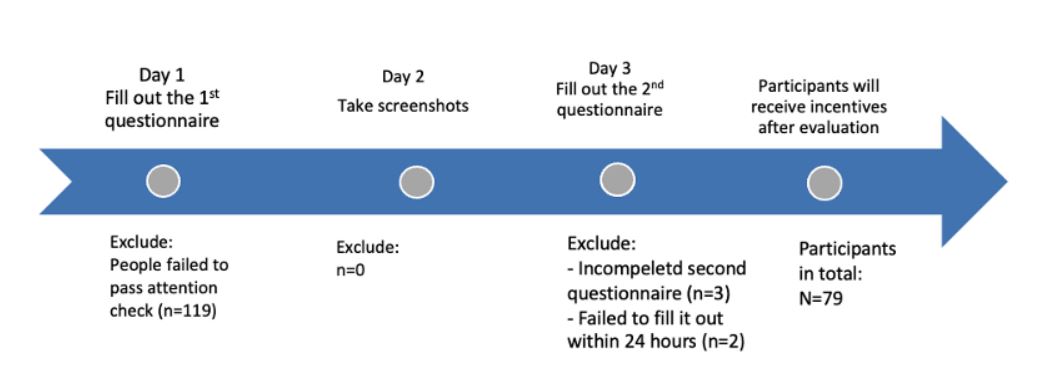What if we Screenshot all the food we see on social media in a day? A mix-method study: how social media food exposure is associated with eating behaviour
by Connie Chen
Thesis supervisor: dr. Saar Mollen
Everywhere you look, you’ll find food. Sharing social media posts daily and instantly makes people’s choices and preferences visible to their online friends and family members, as well as strangers, all of which are impactful for our norm’s perceptions. This study investigated the healthiness of food message exposure on social media and sought to examine whether healthiness of food message exposure on social media can predict their own healthiness of dietary consumption (H1) and whether the relationship is mediated by perceived social norms (H2), while considering the possible moderating role of three media sources (H3).
Figure. An overview of timeline with per exclusion criterion how many people were excluded
A mixed method approach was taken (the fun part!): a longitudinal survey design, with a content analysis. Two questionnaires measured their self-reported food intake of the before they filled out the survey and one content analysis of the media exposure. Respondents were recruited via www.lab.uva.nl (the official research laboratory of the faculty of social and behavioural sciences at the University of Amsterdam). Each participant was asked to fill out two surveys (Day 1 and Day 3) and take screenshots of social media posts on food and drinks (Day 2). A quick note for further researchers: preparation for this part was also exhausting because of GDPR, ethics board, and materials (e.g., email triggers), so it took longer than we expected.
Results showed that participants uploaded more proportions of unhealthy screenshots (56.1%) than healthy ones (43.9%) and no direct effect was found from social media exposure on the actual healthiness score of food consumption. There were no mediation effects through perceived norms and moderation of sources were little. However, it was found that the healthiness of food messages exposure positively predicted perceived injunctive norms of friends and families (b=.06, p=.04), and perceived descriptive norms of friends and families positively predicted the T2 health score of respondents (b=1.21, p=.004). Future research is needed to further examine the factors that could underpin that social media food exposure is related to healthiness of food intake.
